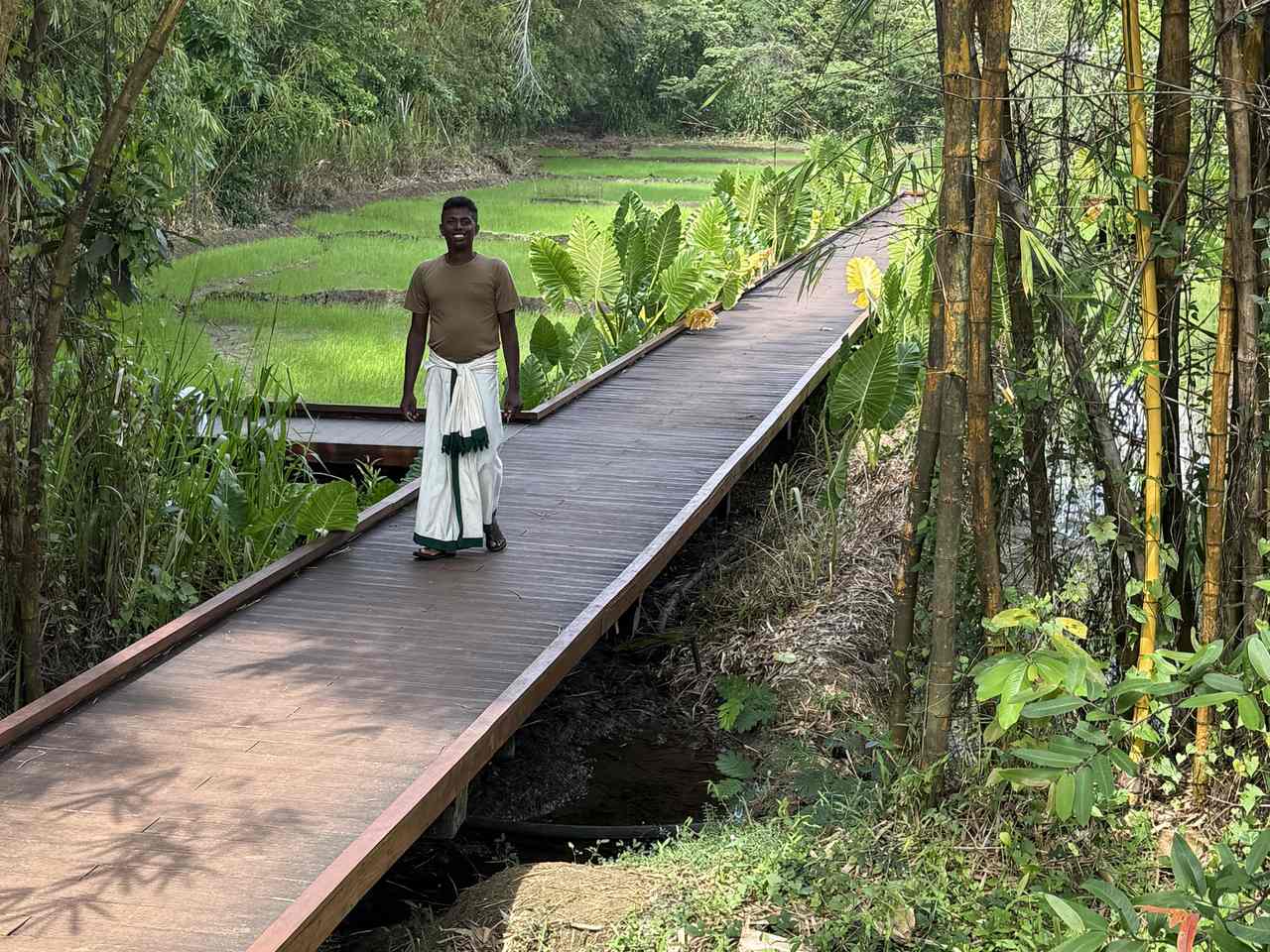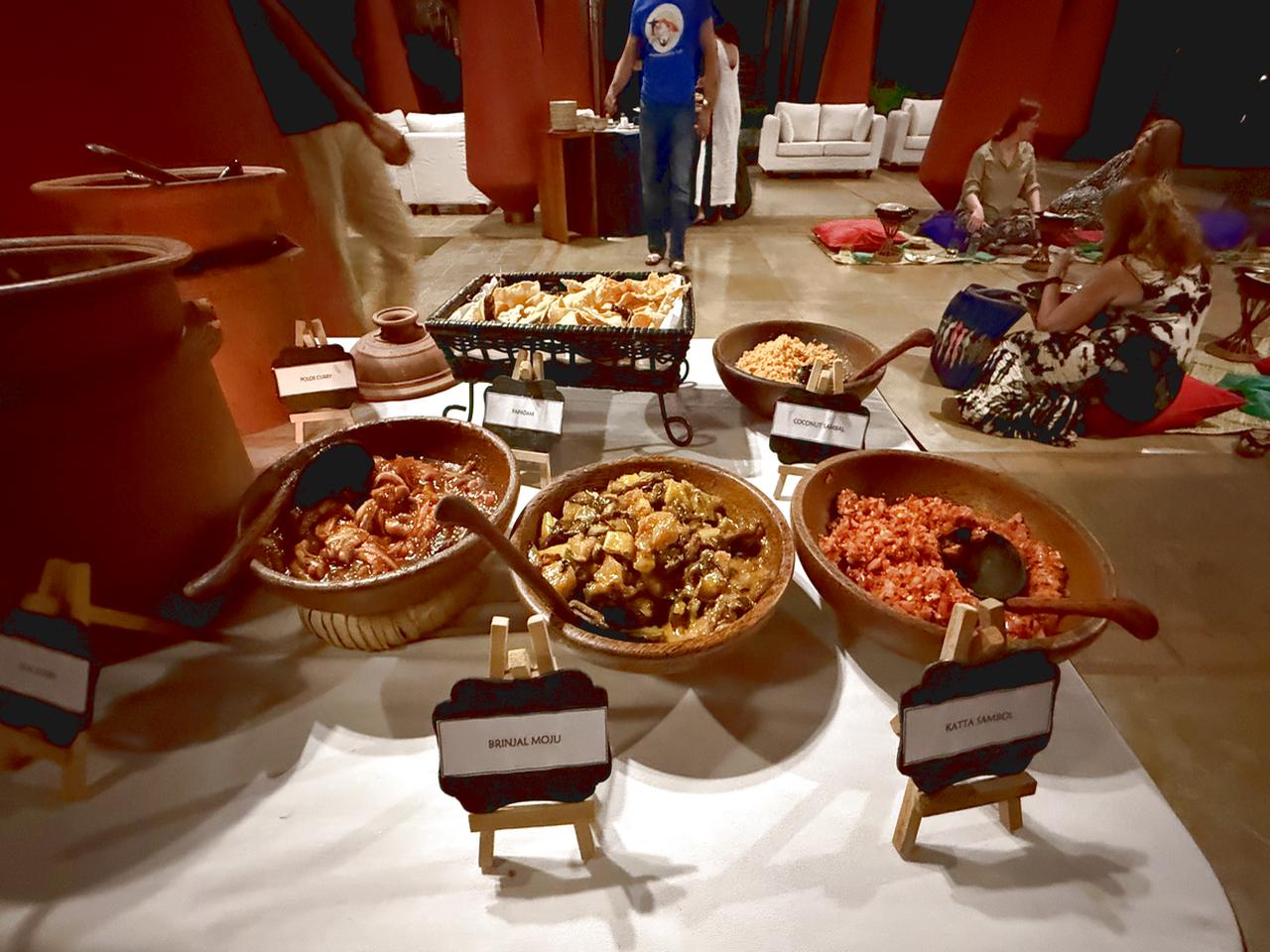The Lush Landscapes of Sri Lanka
Sea, sun and sand were not on the agenda for our ten-day tour of Sri Lanka. ‘A Road Less Travelled’ was the name of the game, so while temperatures soared into the 30s, there was no time for the palm-fringed beaches or the balmy waters of the Indian Ocean.
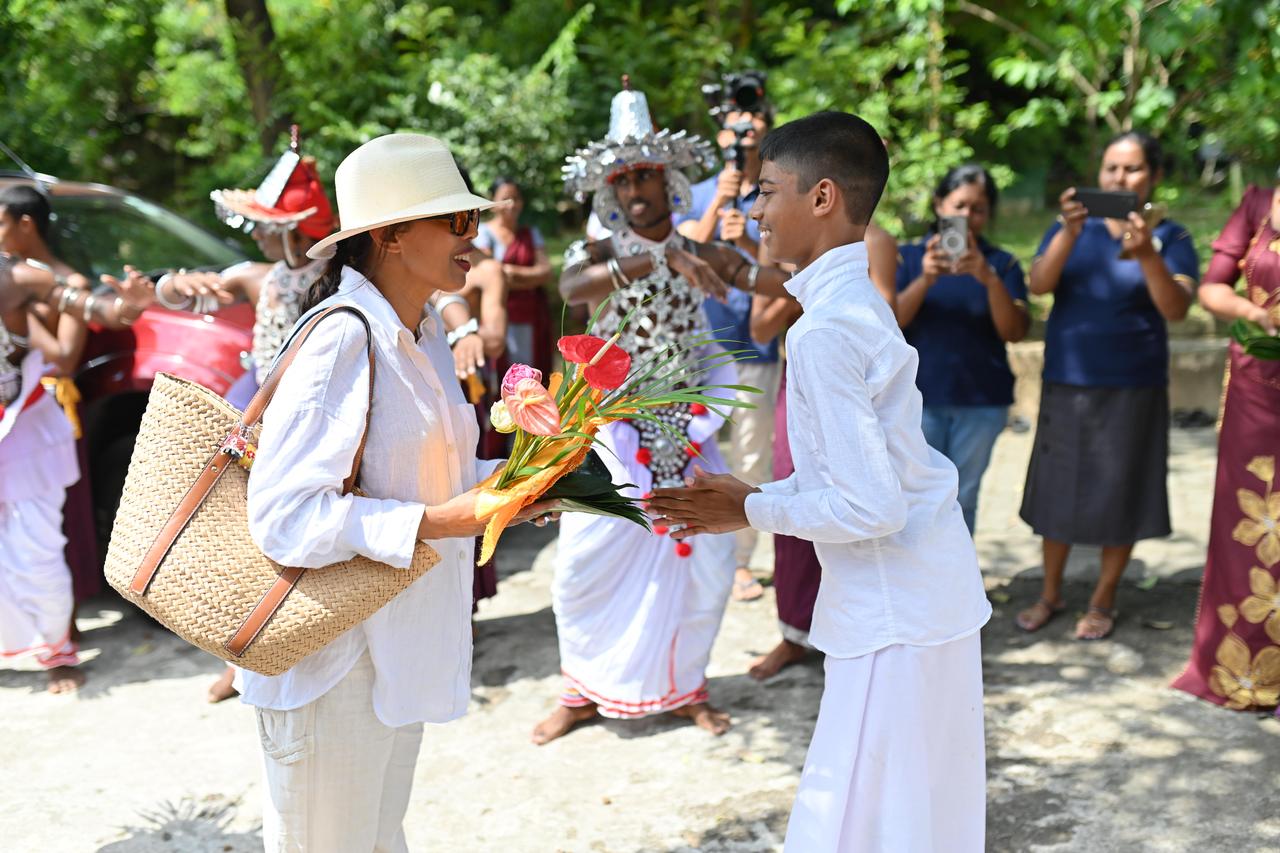
A warm welcome at Ridi Viharaya
We covered hundreds of miles, and wherever we travelled, we were greeted with beaming smiles and heart-warming hospitality. From the capital Colombo, we headed northeast through the cultural heart of the island to Trincomalee on the east coast, then north to Jaffna – now emerging from long years of civil war – then returned south along the island’s west coast. Landscapes ranged from mountain peaks and hill country to lush rainforests, coastal lagoons and plains – all of which contribute to the island’s remarkably rich biodiversity.
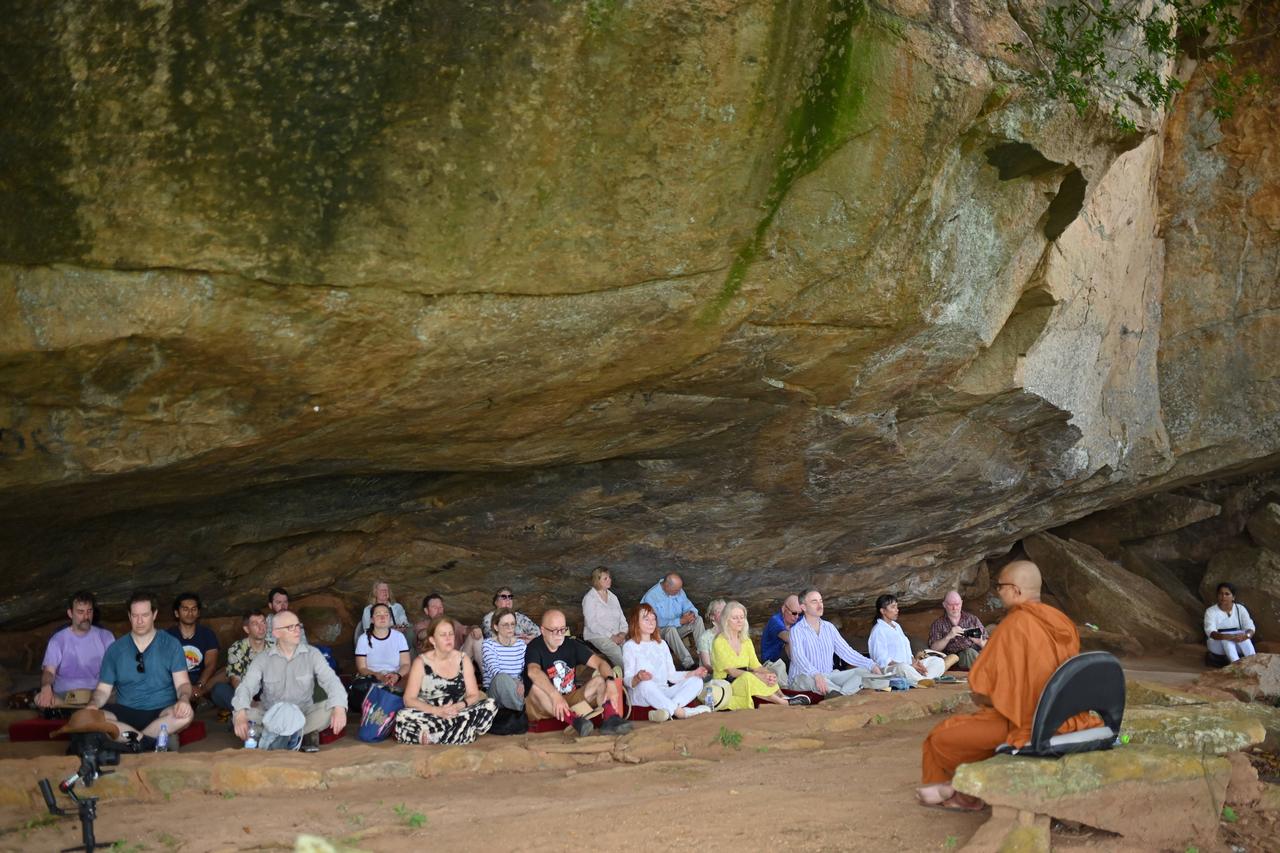
Meditation session at Ridi Vihayara
The focus was on deep-rooted cultural traditions, crafts and gardens, with plentiful group involvement. At the sacred Buddhist site of Ridi Viharaya, we delved into Sri Lanka’s religious philosophy, meditated with a monk in a rock cave, admired the hills around and learnt the ancient art of writing on palm leaves. In mud huts in the jungle, we partook in organic curry-cooking with local village women, using age-old techniques.
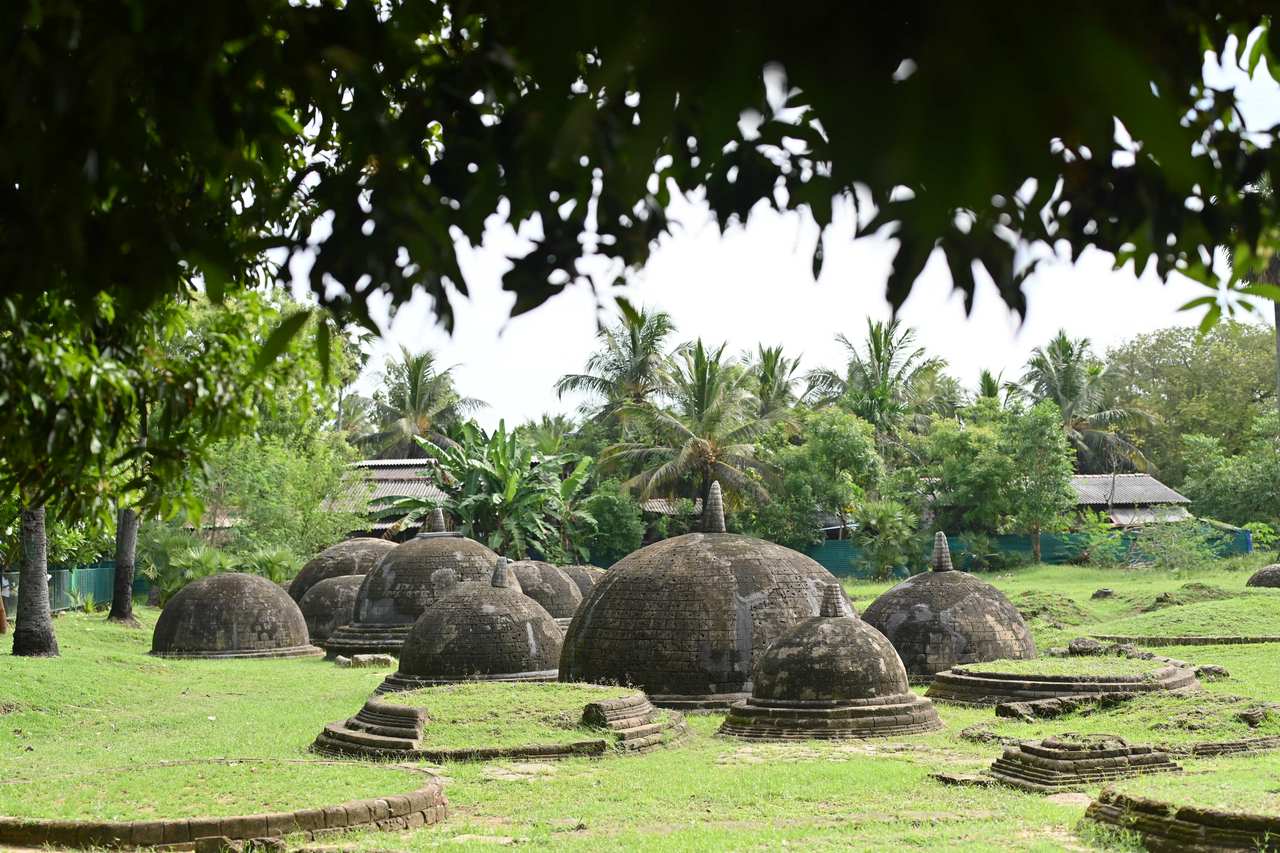
Stupas at Kadurugoda Temple, Kanniya
On the reservoir of the eco-village of Hiriwadunna we floated in ‘banana boats’ and learnt how to make a conical sunhat from a lily pad. We witnessed Hindu rituals at Koneswaram Temple in Trincomalee, saw stupas and ruins at Kanniya and joined local Tamil families at its hot water springs. We experienced Tamil culture in vibrant Jaffna, tasted jackfruit in the market and feasted on the famous Jaffna crab curry.
In Wilpattu National Park, we took jeeps through the beautiful jungle, spotting rare sloth bears and exotic bee-eaters. In wetlands, we were taken on nocturnal trails to seek out fruit bats, fishing cats and the elusive grey slender loris. A magic moment was the hold-up on the A6 when a herd of elephants crossed the road, endearingly shielding their calves as they did so.
Botanical Gardens
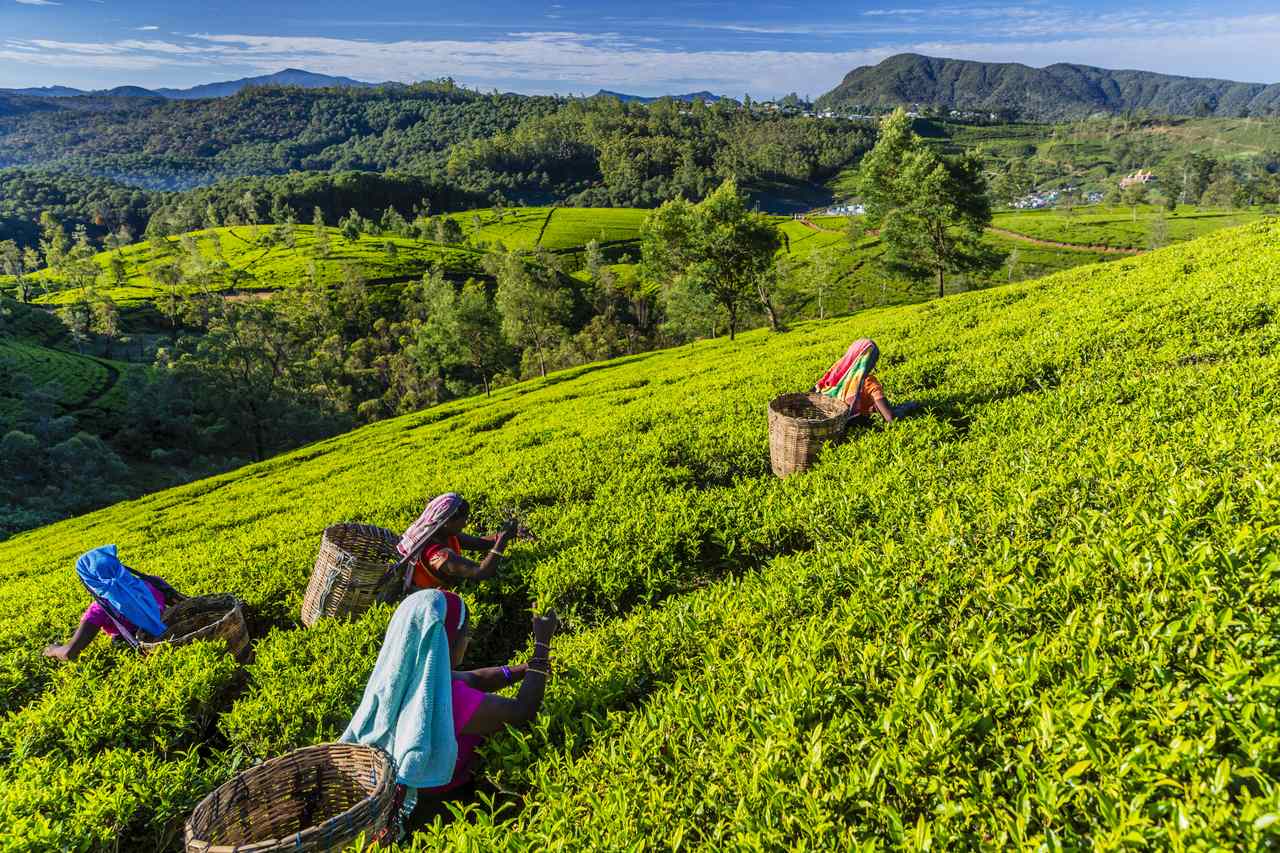
Plucking tea leaves. Photo Hadyniak
The island has five main botanical gardens, the most famous of which is the 147-acre Royal Botanic Gardens near Kandy, founded in 1371 by the Kings of Kandy as royal pleasure gardens and developed as a botanic garden by the British from 1821. Highlights here are the huge tropical trees, the colourful flower borders and the collection of exquisite orchids. Garden lovers will also enjoy the glorious green hills of the island’s tea plantations, the aromatic spice gardens and the less-tamed tropical gardens.
‘Brief’ Garden
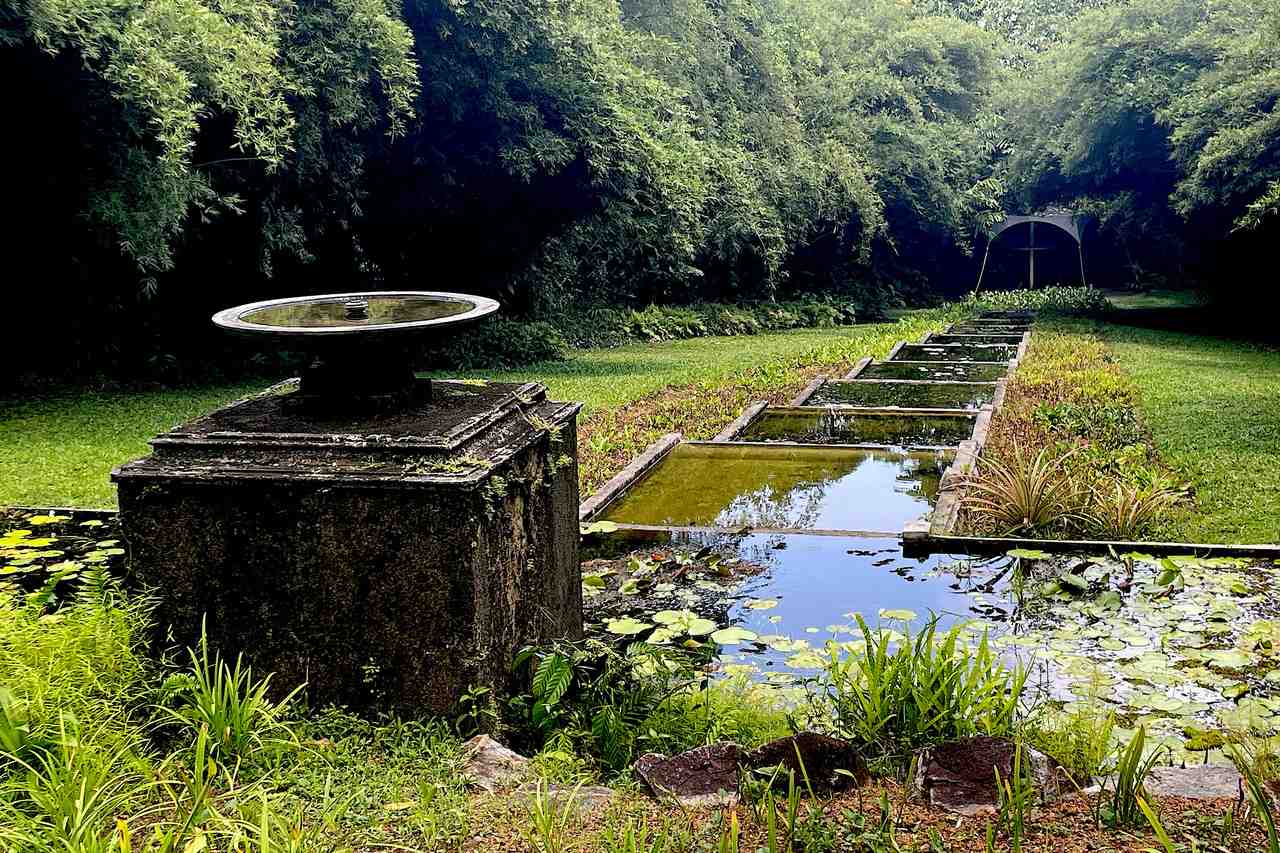
Italian Cascading Pond ©Juliet Coombe
Only an hour from Colombo, but seemingly a world away, a narrow jungle track leads up to the lush tropical haven of Brief Garden. At the entrance and setting the stage are two cheeky satyrs, guarding the gateway.
This tranquil oasis was transformed from a rubber plantation by Bevis Bawa (1909-92), elder brother of Geoffrey Bawa, one of the most influential Asian architects of the 20th century. His inspirational country retreat, Lunuganga, where you can stay and dine, is just half an hour’s drive from Brief.
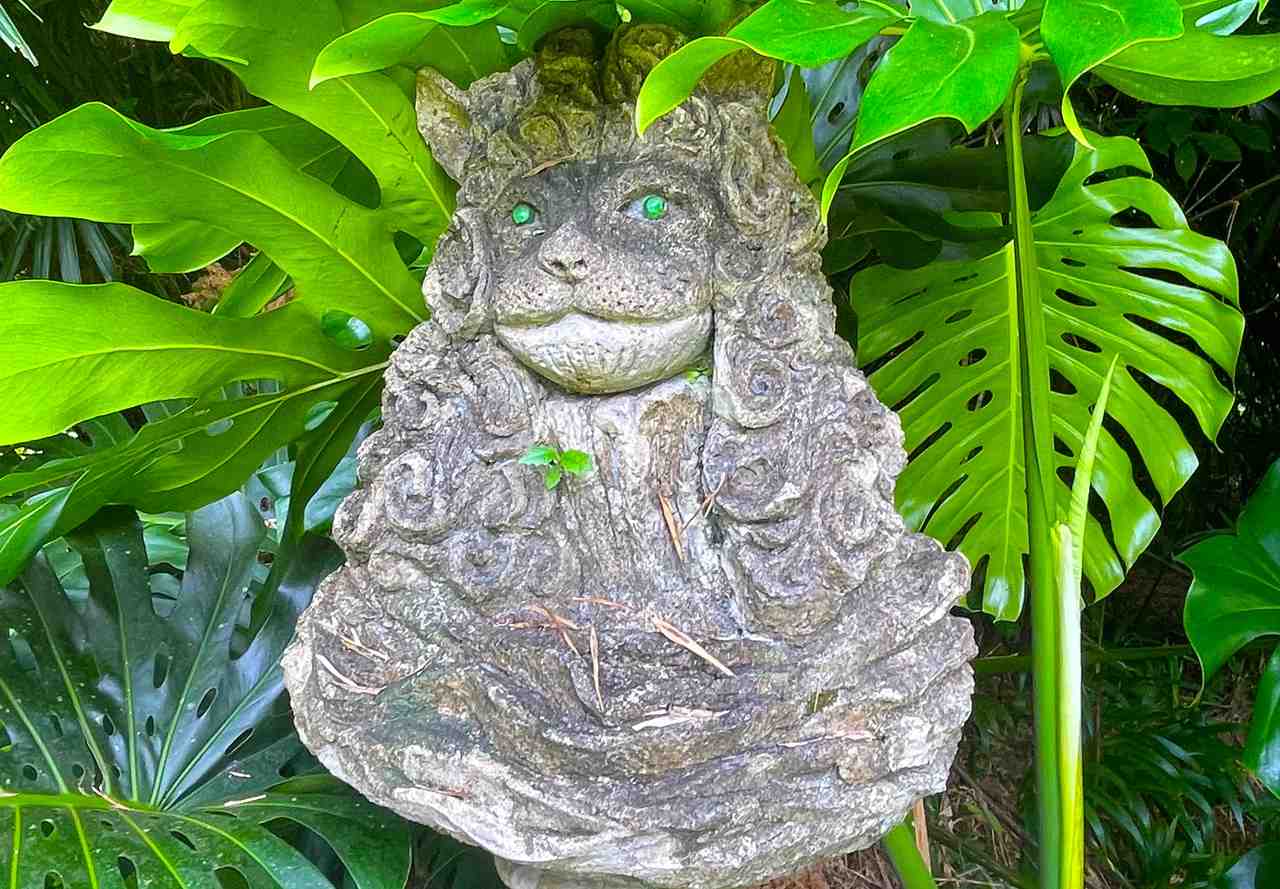
A nod to Bevis’ legal family background ©Juliet Coombe
The enigmatic name, ‘Brief’, refers to a lucrative legal brief which enabled Bevis’ successful lawyer father to purchase the rubber estate. Bevis had no official training but had a passion for tropical landscapes and art, and worked on the garden and bungalow for 40 years, completing the project in 1970.
A tropical retreat, the garden has lush, dense foliage in myriad shades of green, interspersed with garden ‘rooms’ connected by twisting, densely-planted pathways. In each outdoor space a sculpture or decorative feature delights the eye. It might be a folly or a fountain, a Japanese moon gate, a Bacchus bird bath, a bench for reflection or a fanciful sculpture, typically homoerotic, irreverent or quirky.
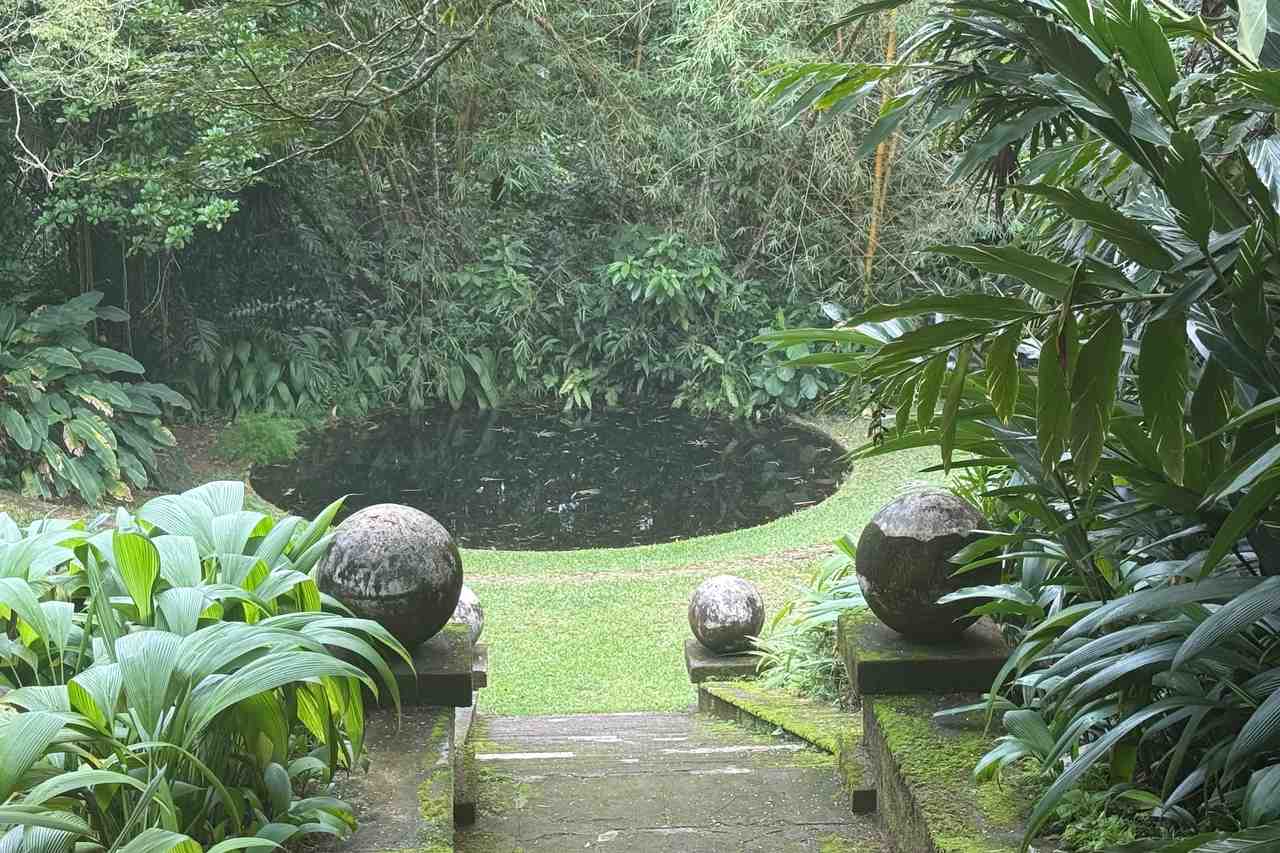
Stone steps lead to secret spots
Bevis certainly had a send of fun. His presence is felt at every turn, and you half expect him to pop out from behind a bamboo hedge. He worked closely on some of the sculptures with artist Donald Friend, who came to visit for a week and stayed for nearly six years. This gave him plenty of time to produce the striking, detailed mural at the entrance of the house, depicting traditions of Sri Lanka.
The house blends seamlessly with its garden surrounds and has sweeping views over the lawn. Inside the artworks, books and photos of friends and family give an insight into Bevis’ lifestyle. Brief was a gathering place for avant-garde artists, literati, local elite, royalty and celebrities. Among those who delighted in the garden and the company of their charismatic host were Hollywood stars Laurence Olivier and Vivien Leigh, and Queen Ingrid of Denmark.
Bawa bequested Brief to Dooland de Silva, his protégé and talented landscape designer. Dooland has now passed the estate on to his son, Dan, an architectural garden designer who carries on the remarkable work in this whimsical garden.
Calamansi Cove Villas – Where gardens meet the sea
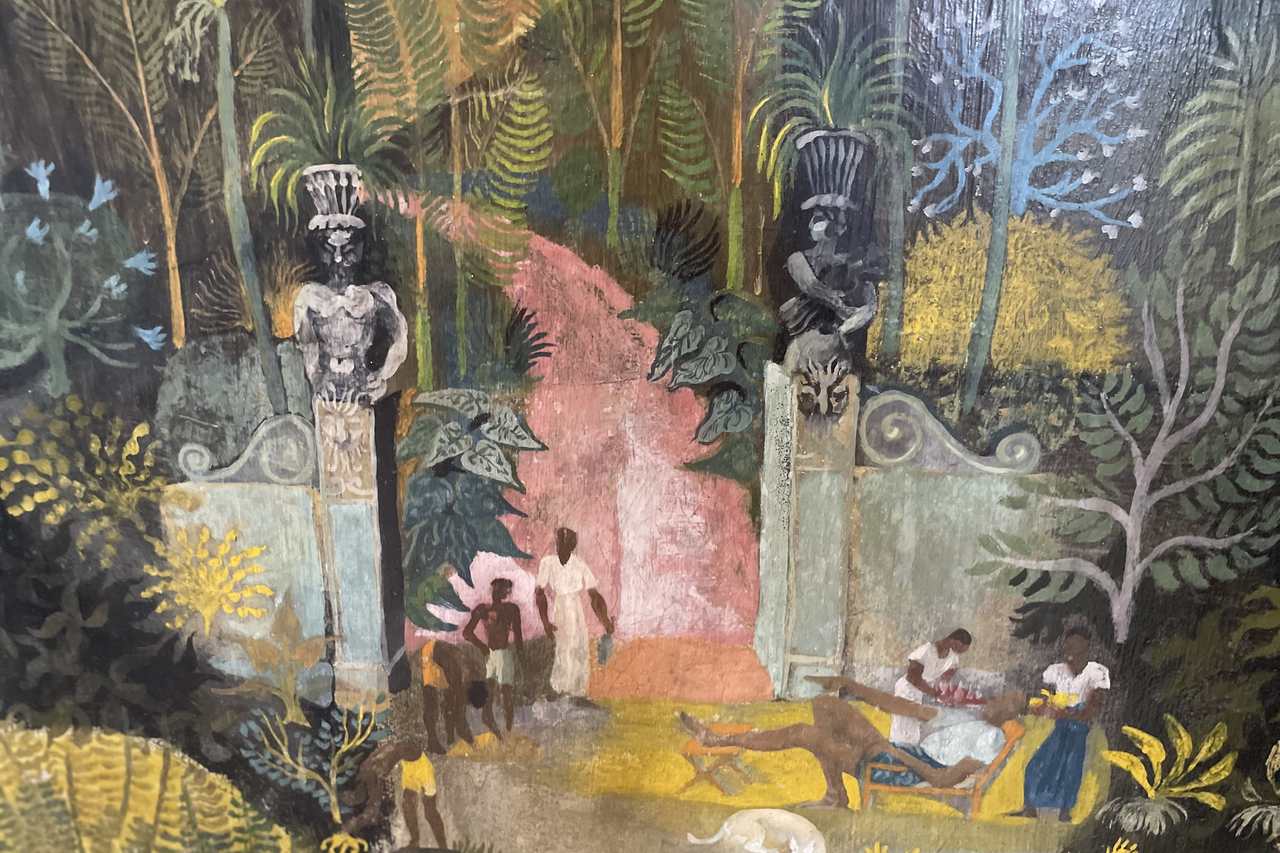
Entrance to Brief – mural by Donald Friend ©Juliet Coombe
Merging with the golden sands and blue seas, at Balapitiya, an hour or so from Brief, lie the Calamansi Cove Villas. As soon as the owners, Eveline and Charles Cadell, saw what Dooland de Silva had achieved at Brief Garden, they knew they had found just the designer to create the gardens for their planned village of villas on a beautiful fishermen’s cove at Balapitiya. The garden was designed to restore coastal biodiversity, integrate native plant life and create privacy for guests. Villas have their own landscaped garden, with palms, sweet-smelling araliya trees and exotic flowering plants.
This coastal oasis is named after the Calamansi citrus trees, which produce a small, tart fruit, known as the Philippine lime and used as a refreshing drink to welcome guests. Mango, breadfruit, jackfruit, banana and palms also flourish here, while the all-purpose King coconut trees tower about the seafront, providing resilience against the sea and salt-laden winds as well as shade – and another welcoming drink.
More Info
- Sri Lanka Tourism here
- Sri Lankan Airlines here flies direct from London Heathrow to Colombo
- Brief Garden here (under maintenance until the end of July). Open 365 days a year 8am-5pm. Entry US$10
- Lunuganga here
- Calamansi Cove Villas here
Also Read:
- Hotel Jetwing Vil Uyana Review
- Sri Lanka North and Western Province
- Sustainable stories from Sri Lanka
- Cycling the far north of Sri Lanka, Jaffna and its islands
- Best time to go to Sri Lanka
- Top 10 things to do in Sri Lanka
The post The Lush Landscapes of Sri Lanka appeared first on The Travel Magazine.















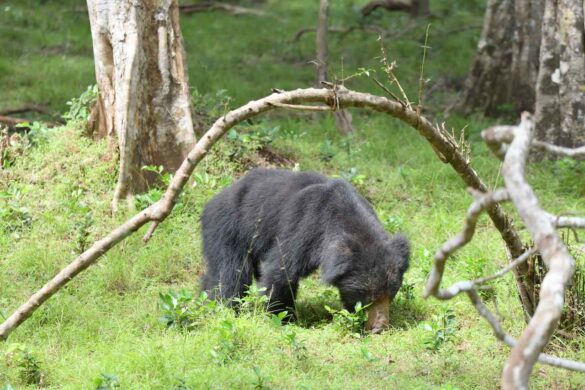
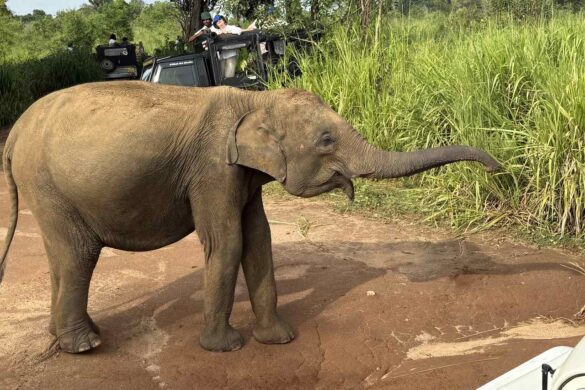

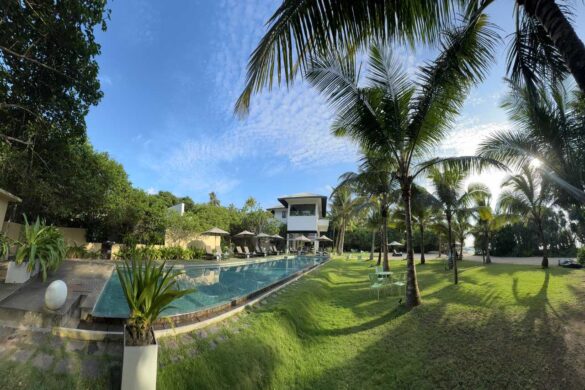
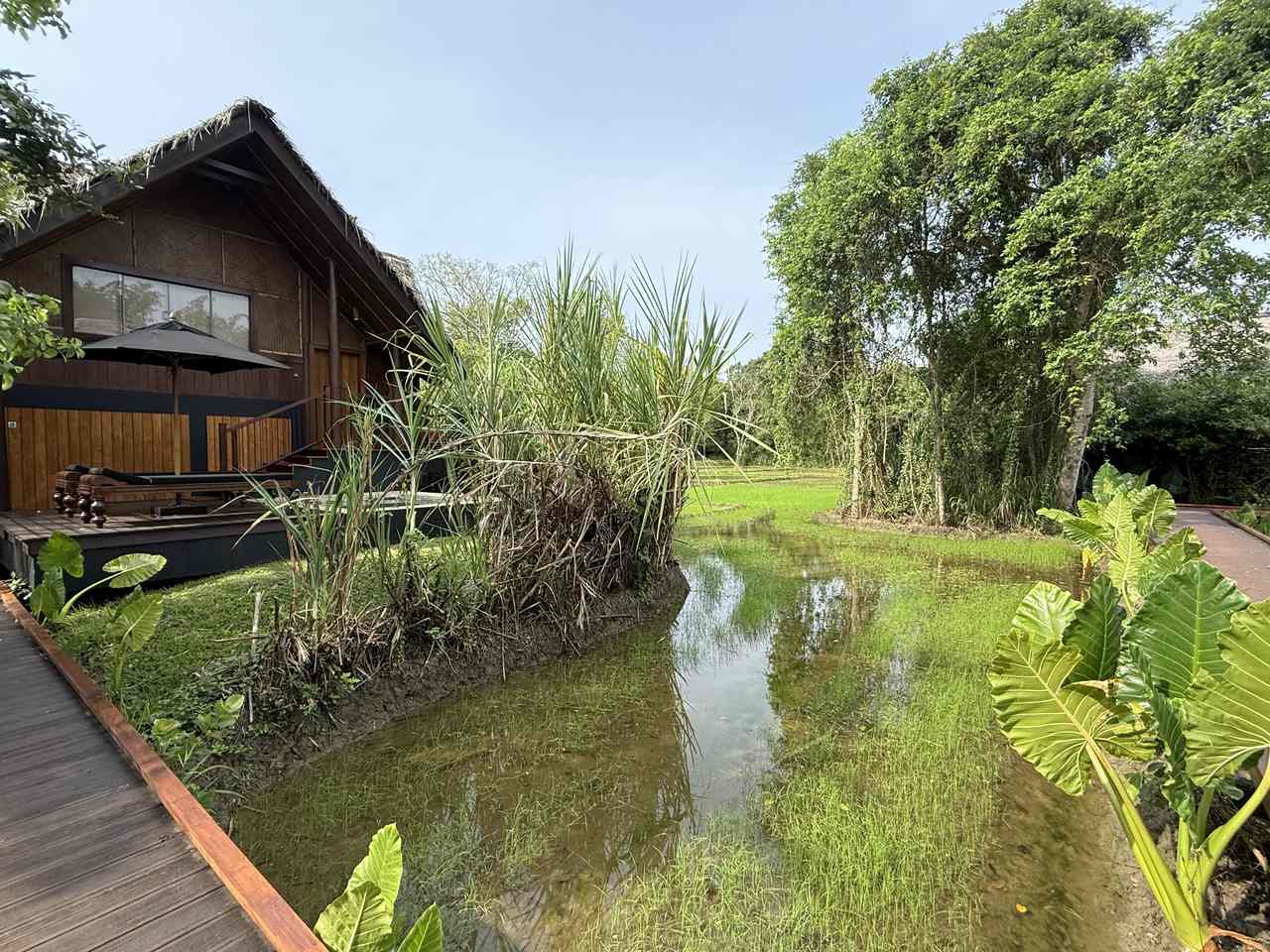
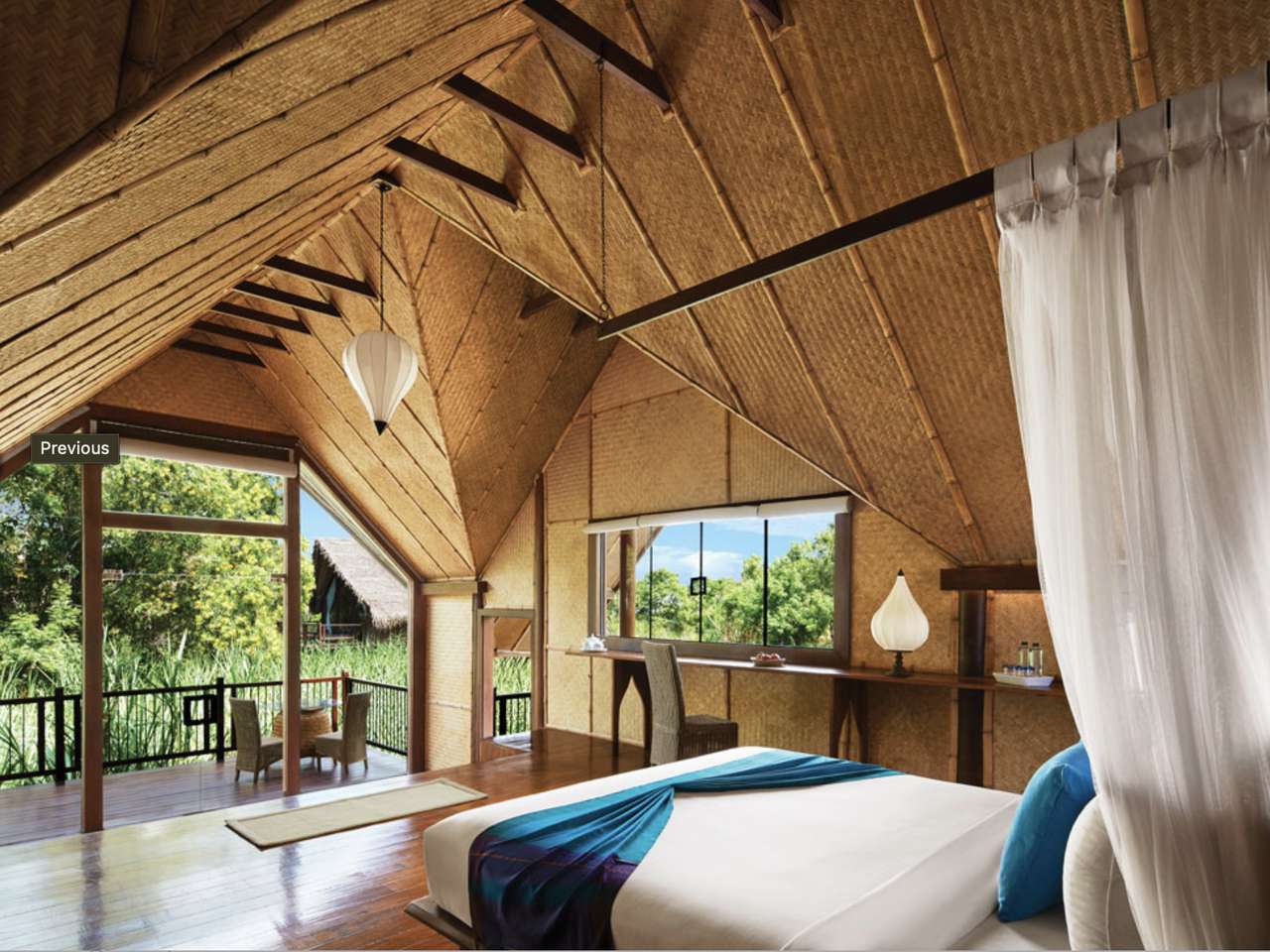 My charming Paddy Dwelling stands on stilts and is reached across the water by a raised walkway. After a welcome dip in the plunge pool, I relax on the deck, overlooking lush paddy seen through the reeds, and listen to the birdsong.
My charming Paddy Dwelling stands on stilts and is reached across the water by a raised walkway. After a welcome dip in the plunge pool, I relax on the deck, overlooking lush paddy seen through the reeds, and listen to the birdsong.